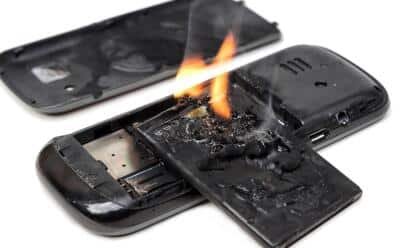Troubleshoot Battery Protection Circuit and How to solve them.
Battery protection circuits are an essential component of modern electronic devices, ensuring that batteries are charged and discharged safely and efficiently. These circuits are designed to protect the battery from overcharging, over-discharging, and short-circuiting, which can damage the battery and even cause it to explode. However, like any electronic component, battery protection circuits can fail, leading to a range of problems for your device. In this article, we’ll explore the symptoms of battery protection circuit failure and provide a step-by-step guide to troubleshooting the circuit.
- Symptoms of battery protection circuit failure
If your battery protection circuit is faulty, you may notice several symptoms, such as:
- Overheating of the battery
Overheating of the battery is a common symptom of a faulty protection circuit. When the circuit fails, it can cause the battery to overcharge, which generates excess heat. This can damage the battery and even cause it to explode if left unchecked.
- Rapid depletion of the battery charge
If your battery is running down faster than usual, it may be a sign that the protection circuit is not working correctly. A faulty circuit can cause the battery to discharge too quickly, reducing its overall lifespan.
- Inability to charge the battery
If your battery is not charging, it could be due to a faulty protection circuit. The circuit may be preventing the battery from charging correctly or may be damaged, preventing the charging process from starting.
- Swelling or deformation of the battery
If your battery is swollen or deformed, it could be due to a faulty protection circuit. A damaged circuit can cause the battery to overcharge or over-discharge, leading to swelling or deformation.
- Short-circuiting of the battery
A short-circuited battery can be dangerous and can even cause a fire. A faulty protection circuit can allow a short circuit to occur, which can damage the battery and the device it powers.
- Inconsistent battery performance
If your battery performance is inconsistent, it could be a sign of a faulty protection circuit. The circuit may be working intermittently, causing the battery to charge and discharge unpredictably.
If you notice any of these symptoms, it’s important to troubleshoot your battery protection circuit to prevent further damage to your battery and device.
Tools and equipment needed
To troubleshoot your battery protection circuit, you’ll need a few tools and equipment:
- A multimeter to measure voltage and resistance
- A soldering iron and solder
- A desoldering pump or wick to remove components
- Replacement components, such as MOSFETs, resistors, and capacitors
Step-by-step troubleshooting process
Now that you have the tools and equipment, let’s get started with the troubleshooting process. Follow these steps to diagnose and fix the problem with your battery protection circuit:
- Step 1: Check the battery voltage
The first step is to check the voltage of the battery. Use a multimeter to measure the voltage between the positive and negative terminals of the battery. If the voltage is too low, the battery may be discharged, and you may need to recharge it before proceeding.
- Step 2: Inspect the battery protection circuit board
The next step is to inspect the battery protection circuit board for any visible signs of damage, such as burn marks or bulging capacitors. If you see any damage, it’s likely that the circuit board is faulty and needs to be replaced.
- Step 3: Check the MOSFETs
The MOSFETs are the most critical components of the battery protection circuit. They control the flow of current between the battery and the device and are responsible for protecting the battery from overcharging and over-discharging. Use a multimeter to check the resistance of each MOSFET. If the resistance is too high or too low, the MOSFET may be faulty and needs to be replaced.
- Step 4: Check the resistors and capacitors
Resistors and capacitors are also essential components of the battery protection circuit. They regulate the flow of current and voltage and help protect the battery from damage. Use a multimeter to check the resistance and capacitance of each component. If the values are outside the specified range, the component may be faulty and needs to be replaced.
- Step 5: Verify the protection circuit functionality
After replacing any faulty components, you need to verify the functionality of the protection circuit. Connect the battery to the device and monitor the voltage using a multimeter. Verify that the battery is charging correctly and that the voltage is within the specified range. You should also monitor the temperature of the battery to ensure that it’s not overheating.
- Step 6: Replace any faulty components and test the protection circuit again
If the protection circuit is still not working correctly, you may need to replace additional components. Repeat steps 3-5 until the circuit is working correctly. Once the circuit is working correctly, test it again to ensure that the battery is charging and discharging correctly and that the voltage is within the specified range.
A faulty battery protection circuit can cause a range of problems for your device, including overheating, rapid depletion of the battery charge, and inability to charge the battery. By following the step-by-step troubleshooting process outlined in this article, you can diagnose and fix the problem with your battery protection circuit. Remember to always take the necessary precautions when working with electronic components and to seek professional help if you’re unsure about any aspect of the troubleshooting process.
Prev Article: Different Types of Casings for Custom Lithium Batteries
Next Article: What You Need to Know about Shipping Lithium Battery



Leave A Comment